| Amorphous, metallic glass, rapidly solidified alloy wire preparation by melt-extraction method |
| Amorphous, metallic glass, rapidly solidified alloy wire preparation by melt-extraction method |
prepared by melt-extraction method Table 1 Alloy sytem for amorphous wire/metallic glass wire formation by Arc-melt type melt extraction method [1, 2] (Update 02/20/2014) 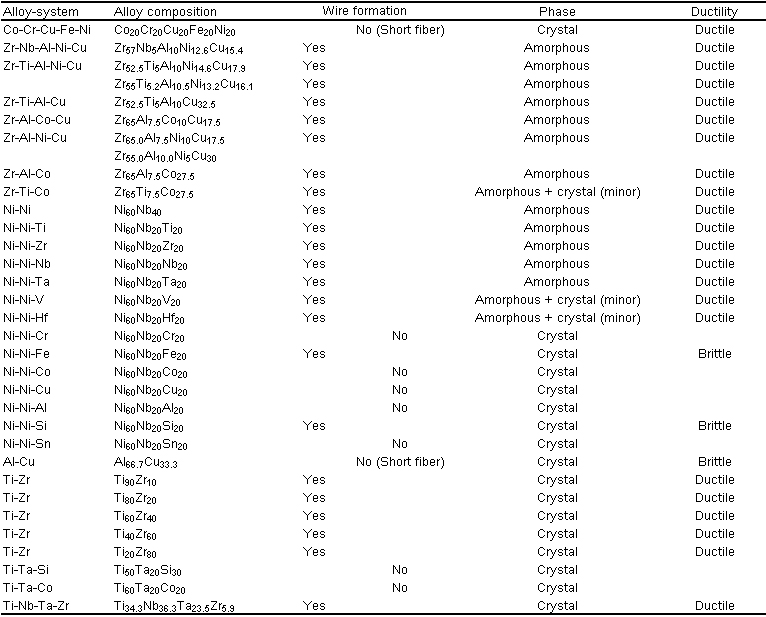 REFERENCES [1] T. Nagase, K. Kinoshita, Y. Umakoshi, Mater. Trans. 49 (2008) 1385-1394. http://www.jim.or.jp/journal/e/49/06/1385.html [2] T. Nagase, M. Ueda and Y. Umakoshi: J. of alloys and compounds, 485, 304-312 (2009). http://dx.doi.org/10.1016/j.jallcom.2009.05.122 |
Metallic glasses are known to exhibit superior mechanical properties such as high tensile strength and large elastic elongation limit of approximately 2%. In order to effectively utilize their superior strength, it is preferable to prepare wire-shaped samples of metallic glasses with a circular cross section and a highly smooth surface without any roughness (such as that of a mirror). The melt-extraction method without any cooling medium [1,2] is expected to yield novel metallic glass wires that cannot be obtained by the in-rotating-liquid melt spinning method [3]. Newly developed Arc-melt type melt extraction method [4-6] is the promissing technique for realizing the preparation of metallic glass wire in high reactivity and/or high melting temperature alloys such as Zr-, Ti-, Ni-based alloys and so on. REFERENCE [1] P. Rudkowski, G. Rudkowska, J.O. Strom-Olsen, Mater. Sci. Eng. A 133 (1991) 158-161. [2] J.O. Strom-Olsen, Fine Fibres by Melt Extraction, Mater. Sci. Eng. A 178 (1994) 239-243. [3] I. Ohnaka, T. Fukusako, T. Ohmichi, J. Jpn. Inst. Met. 45 (1981) 751-758. [4] H. Kimura, A. Inoue, K. Sasamori, H. Ohtsubo, Y. Waku, J. Jpn. Soc. of Powder and Powder Metallurgy 47 (1999) 427-432. [5] T. Nagase, K. Kinoshita, Y. Umakoshi, Mater. Trans. 49 (2008) 1385-1394. http://www.jim.or.jp/journal/e/49/06/1385.html [6] T. Nagase, M. Ueda and Y. Umakoshi: J. of alloys and compounds, 485, 304-312 (2009). http://dx.doi.org/10.1016/j.jallcom.2009.05.122 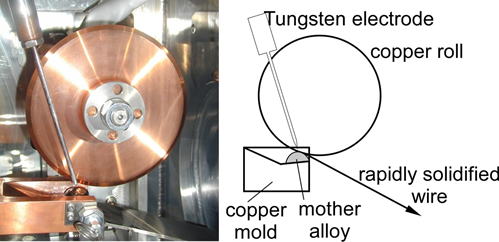 Figure 1 Arc-melt type melt extraction equipment [5] 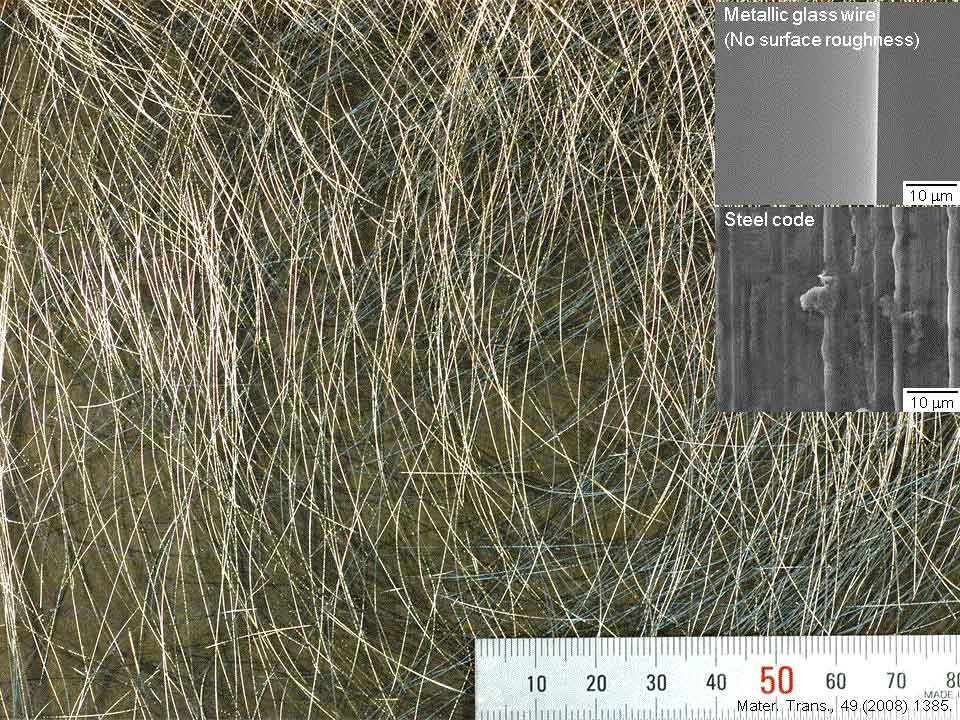 Figure 2 Ni-free Zr-based metallic glass wire prepared by melt-extraction method [5] |
We firstly develop a rapidly solidified Fe-Cu-Si-B alloy with a macroscopically separated structure by the arc-melt-type melt-extraction method [1]. A unique core-wire/surface-cover-layer structure composed of core Fe-Si-B-based amorphous alloy and cover Cu crystal was formed by liquid phase separation during rapid quenching of thermal melt. REFERENCE [1] T. Nagase and Y. Umakoshi: J. of alloys and compounds, 495, L1-L4 (2010). http://dx.doi.org/10.1016/j.jallcom.2010.01.127 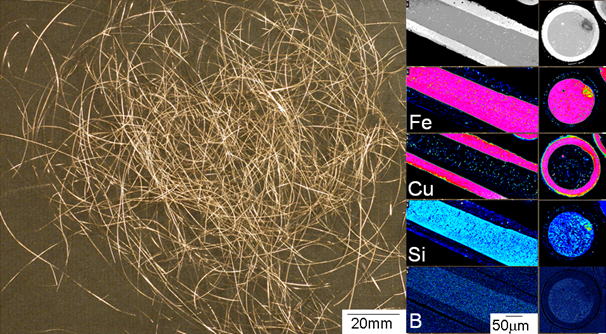 Figure 1 Macroscopically phase separated melt-extracted wire. Continuous rapidly solidified wire shows Fe-Si-B amorphous core/Cu crystal cover layer structure [1]. |
Beta-Ti-type Ti-30Nb-10Ta-5Zr (TNTZ) wires with high-ductility were developed using the Arc-melt type melt-extraction method. The continuous melt-extracted wire with very smooth surface and small fluctuations in the diameter realizes the high tensile strength and superior bending ductility of TNTZ alloy. Figure 1 is a demonstration of the high tensile strength, ductility, and easy handling of one of the TNTZ melt-extracted wires. The TNTZ wire did not get fractured when it was used to lift a heavy load of approximately 1L water. The TNTZ wire can be bent through 180 degree without fracture in spite of the heavy load as shown in the close-up image. The wire was not damaged even when it was held tightly by a pair of needle-nose pliers. Furthermore, the OM and SEM images of the knot formed by the TNTZ wire highlight the full ductility of the wire. The Arc-melt type melt-extraction method is very effective for developing new Beta-Ti-based biomaterials [1,2]. REFERENCE [1] T. Nagase, T. Nakano, Y. Umakoshi and M. Niinomi: Mater. Trans., 51, 377-380 (2010). http://www.jim.or.jp/journal/e/51/02/377.html [2] T. Nagase, K. Kinoshita and Y. Umakoshi: Mater. Trans., 49, 1385-1394 (2008). http://www.jim.or.jp/journal/e/49/06/1385.html 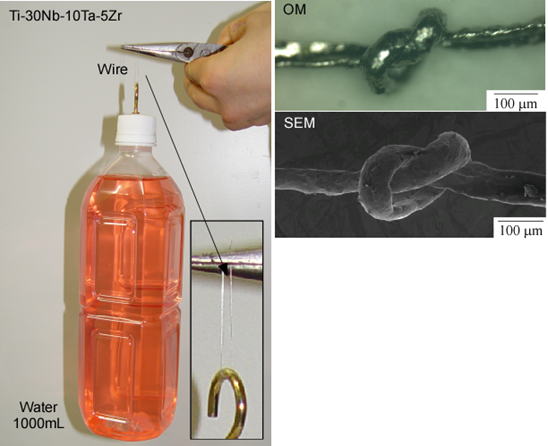 Table 2 A demonstration of the high tensile strength, ductility, and easy handling of one of the TNTZ melt-extracted wire [1] Table 2 Alloy system for Ti-based and Zr-based alloy wire formation by Arc-melt type melt extraction method [1][2]  |